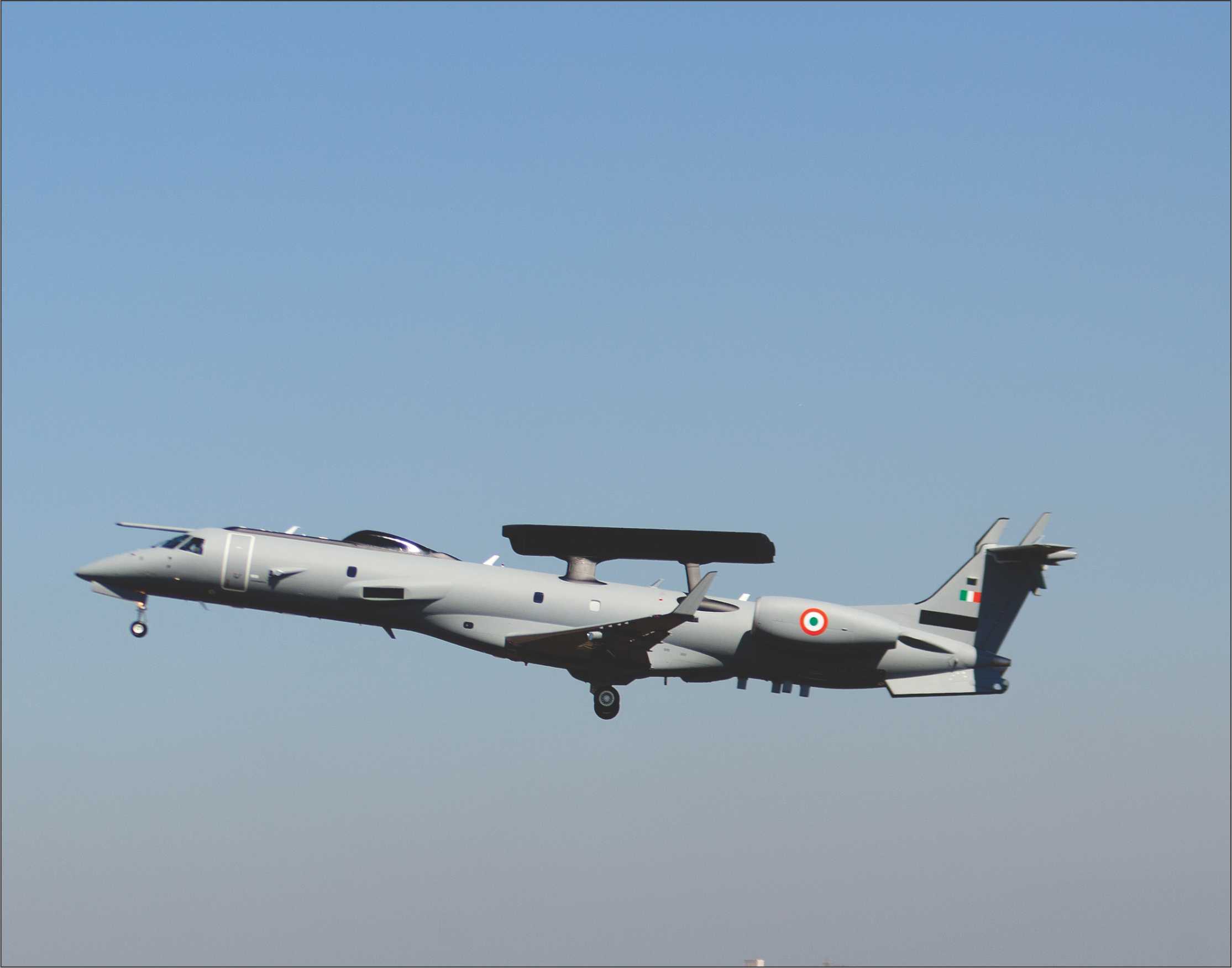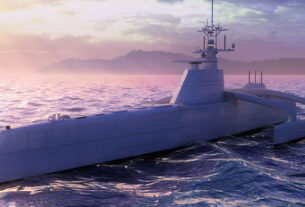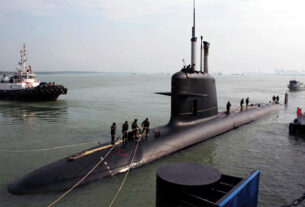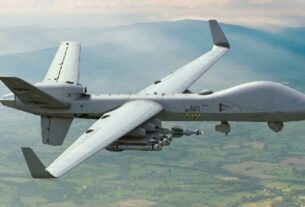Intelligence gathering and role of UAV
With the introduction of new generation war technologies, the modern warfare is all about achieving swift victory in which the enemy is inflicted with massive destruction within hours of the battle wave, leaving retaliation capacity of the opponent to a nearly dead end situation.
Countries are investing huge sums of money into advanced technologies so that their militaries can be equipped with modern systems to deal with new situations where hi-speed data can enhance decision making process faster and neutralize high risk threats urgently.
Technology has allowed the military to rely less on human intelligence, or HUMINT, which puts the lives of spies and operators on the ground at risk, and procure aerial systems that provide myriad levels of intelligence.
Thus, unmanned aerial vehicles have been invaluable in gathering several types of intelligence from the air, such as SIGINT and image intelligence.
Advanced satellite and unmanned systems, both of which keep soldiers out of harm’s way, has allowed for the military and covert organizations to shy away from human intelligence gathering, or at the very least, rely on it less.
Today, UAVs have replaced satellites and manned aircraft as the favored platform for intelligence collection, and UAVs are the ultimate intelligence platform.
The United States is continuing to invest in these proven platforms for intelligence collection. The US Defense Department said recently that the US Air Force would be purchasing 29 additional remotely piloted Reaper drones and the Army would be purchasing additional Gray Eagle drones, the service’s version of the Predator.
Recent operations in Iraq, Syria, Yemen and continued operations in Afghanistan have forced Washington to continue to procure these vital systems for ISR purposes.
Still there is a debate that the heavy reliance on machine-based intelligence gathering may have come at a cost in the quality of military intelligence overall.
What can be understood as Unmanned Aerial Vehicles (UAV), also referred to as drones or RPVs (Remotely Piloted Vehicles), are pilotless aerial vehicles which can be guided either through remote control by a military squad in its home country or that can navigate autonomously based on a pre-programmed software.
Drones can be classified into civilian and military ones, each with different characteristics.
The rise of military drones can be understood by two main factors: first, technological advances that allowed unmanned flying objects to be accurately guided over large distances and second, better intelligence gathering, making possible to identify high value military targets while keeping civilian casualties and other collateral damage as low as possible.
Armed drones are similar to armed manned aircraft since they provide information as well as have strike capacity: they can kill, disable, support fighters on the ground, destroy, harry, hinder, deny access, observe, and track.
It is common to mistake armed UAVs with cruise missiles, since both have a high precision strike. Nonetheless, generally speaking, a UAV can deliver munitions and then return to be reused.
There are four key technologies that have changed in recent years allowing such developments: 1) Inexpensive, Precision Navigation; 2) Inexpensive, Reliable Satellite Communication; 3) Lightweight Surveillance Equipment; 4) Lightweight Target Designation Equipment and Precision-Guided Munitions (PGMs).
Improved technology
These improvements permit that a missile designed in the 1970s, such as the Hellfire, might be used in a drone and effectively hit a target.
The first technology allows unmanned aircraft to fly long distances without concern about getting disoriented. This technology is available to practically anyone in the world, since its commercial use has expanded in the last years.
The second one, low-cost satellite communication, enables users to require only a simple satellite phone with a low-bandwidth communication to know the UAV’s location and how it is functioning.
The third technology is constantly evolving and it is one of the main economic advantages of using drones: they can be very small, in part because they are not required to transport a human being, which results directly in relatively small costs.
The last one represents a major change in aerial operations: PGMs increases the accuracy of strikes to a point where it is possible to aim at a single human being and eventually hit it precisely.
Distinction between armed UAVs can be made in relation to its ranges (long, meaning above 300km, or low) and technology (high, understood as restricted for only some countries, or low, available for most countries).
An example of long range and high technology is the US MQ-1 Predator, the MQ-9 Reaper and the RQ-7 Shadow.
Although the technology for keeping the Predator, the Reaper, and Shadow in the air is not particularly advanced, the mission equipment that allows them to have an impact on ground combat is more advanced and not widely available.
UAVs had already been early thought of during the 19th Century, with the use of balloons to bomb enemy cities, such as the launch of 200 pilotless balloons with bombs by the Austrians against Venice in 1849.
Balloons were also used on the United States Civil War (1862). But the use of balloons had another objective: aerial reconnaissance, as used on the French Revolution (1889), for example.
At this point, it was clear which the air power’s two main objectives were: tactical, for supporting ground forces through reconnaissance, supply, and communications; or strategic, for winning the war through the bombing of cities.
The outbreak of World War I (1914-1918) marks the begging of the Air War, since it was the first time when aircrafts were used on the battlefield.
However, the first use of airspace in war was not for combat, but for reconnaissance. First incursions had the objective of taking pictures and locating enemy combatants.
But soon the possibilities of air attack were exploited, when pilots started to carry bombs or guns in order to strike armies, cities and factories. Air combat also started in WWI, when pilots shot each other in direct combat.
Brief history
Besides aircrafts, aerial torpedoes and flying bombs were also developed in WWI. Nonetheless, they didn’t have as much success due to problems in the stabilization and operation of the new technologies.
With the end of World War II, the Cold War started and, with developing technologies, UAVs projects start to show real results.
The Korean War (1950-1953) brought an innovation: the first operational unmanned helicopter, QH- 50, from the United States. The Vietnam War (1955-1975) saw the most extensive use of drones until then.
It was a turning point in the UAV history, because from that moment on it became a sensor instead of a target, acting in reconnaissance missions. The main UAV used by the United States in that war was the Lightning Bug, an evolution of Firebee.
The central improvement of this new model was that Lightning Bug could be controlled by ground, unlike Firebee, that was launched from a plane and controlled by it. It performed 3,425 reconnaissance missions and was used to spy Chinese territory.
In the Yom Kippur War (1973), Israel used Firebees (bought from the United States in 1971) to break the anti-aircraft missiles from Egypt.
The use of UAV fueled Israel’s interest in this new technology. Later, in the 1980s, that country would develop modern drones like the Scout and the Pioneer, capable of live video transmissions.
In 1982, when Israel invaded Lebanon, the country also used UAVs to damage the Lebanese air defence system.
Lots of projects of new UAVs were developed in the decades of 1960s, 1970s and 1980s. The great majority was cancelled because of lack of investment or consecutive failed tests.
One of these projects was “Aquila”, from the United States, in 1975. The idea was of an UAV that could provide laser designation for a precision monition. The tests did well, but it was cancelled before it entered in production.
One of the main obstacles was the size of the components (data link and mission payload), which didn’t fit the vehicle. The Gulf War (1990-1991), which encompassed Operation Desert Storm and Operation Desert Shield, had a great use of UAVs, mainly the Pioneer, which United States had brought from Israel in 1986.
This UAV is still in service after the Gulf War because of its great acclamation, having flown in Bosnia, Haiti and Somalia. In the 1990s, the United States gained experience in the use of UAVs (such as with the Pioneer, Hunter, Pointer, Exdrone and Predator) in combat situations, which proved very important in the later War on Terror.
In fact, the War on Terror was another turning point for the UAV history, when it, besides being a sensor, turned into a weapon.
After the 9/11 attacks, the United States unleashed Operation Enduring Freedom against Afghanistan (2001) and Operation Iraqi Freedom against Iraq (2003), using UAVs for surveillance, but also – and for the first time – for killing enemies.
Equipping the UAV with weapons was a mark on the history of this technology, and the birth of the Unmanned Combat Air Vehicles (UCAVs).
The main UAVs used on this war were the Predator and the Global Hawk, besides the Israeli Hunter UAV. The Global Hawk was responsible for providing near-real-time, high-resolution intelligence, surveillance and reconnaissance images.
Advantages
The impact of drones in the strategic context is of very much importance. Drones’ costs and size are lower than a manned aircraft.
However, since a drone is not operated individually, but as part of a more complex system consisting of several aircraft, sensors, ground control, and satellite linkages, the number of personnel needed to operate a Predator Combat Air Patrol is estimated to exceed 80 people, and 128 soldiers are needed to operate a Platoon of four MQ-1C Gray Eagles.
Still, in overall, drones present a slight advantage over manned aircraft. Therefore, when relating their low costs with their operational uses, it is shown the advantages to use drones in military operations.
Drones like the Predator are often called “hunter-killer”, since they can be used to fly in search for targets and strike them. Surveillance drones can be very effective since due to its low-flying capability they are difficult to observe with a ground-based radar.
As a result, airspace at low altitude is not strictly controlled, making it possible for one to penetrate into another nation’s airspace without being detected.
UAVs’ impact on economy is also of great importance, since, according to the RAND Corporation, there will be an increase in drone spending on procurement and research and development (R&D) from $6.6 billion in 2013 to $11.4 billion in 2022.
Despite major US dominance on UAV procurement and R&D, projections show a relative increase of the rest of the world in this market, since more than 50 countries are currently developing UAVs, compared with more than 70 countries that have already acquired various types of drones.
Another application of drones, which is still under a more theoretical approach, is the use of mini-drones to “swarm” a target, like a group of bees.
Swarms would consist of independent parts with no central leader, implying that a strong self-organization is the key to the whole working. Swarms are very appealing for unmanned war, since they can perform incredibly complex tasks as long as each part follows very simple rules by a controller.
This concept is actually under development: the Santa Fe Institute is carrying out a study on these proliferated autonomous weapons (PRAWNS), trying to apply this concept in robotic warfare.
Also under this line of research, Lockheed Martin has a similar program on robot swarms funded by DARPA, called the “Wolves of War”.
The idea behind this is that, as the PRAWNS spread in an almost random search, they would broadcast to the group any targets they find and then enter in a formation to attack them.
If drones are game changers, any country who possesses them could decisively win in the battlefield, but not necessarily the war.
Therefore, what matters is their relation with the associated country’s military doctrine, permitting its implementation in any tactical level.
States can use armed UAVs in cases where they would otherwise do nothing, while in other situations they might use them instead of using more aggressively and directly approaches.
Currently, the proliferation of armed UAVs is similar to the traditional spread of most conventional weapon systems: states capabilities are enhanced, but such is in a measured and evolutionary way.
It is the way countries use drones with their strategy and policy that could shape the way they conduct conflicts and wars.
Thus, something is revolutionary not so much because of what it can do, but rather because of the social, military, business, political, ethical, and legal questions it forces us to ask.
For such reasons, it is definitely a subjective question if currently drones are an evolution or revolution in military affairs, since its recent military uses still has not shown its true potentialities in a war.
Drone warfare might be seen as ideal to settle some of the main issues that torment the People’s Republic of China.
Its support for terrorism containment strategies can be applied to separatist movements in the provinces of Xinjiang and Tibet. Remote reconnaissance is also fit to monitor disputed territories in the South and East China Sea.
China’s capabilities
Accordingly, China’s economic power is sufficient to allow the country to develop its own fleet of unmanned aircrafts, which it is already doing, having rapidly achieved excellence in the late years.
For example, an aviation exposition in Beijing showcased the CH-4 model, compared to the North-American Predator.
It can carry four to six missiles and has the operational reach of 3,500km. Two-year long cyber attacks perpetrated against defence contractors in the US, focused specifically on drone technology, are attributed to the People’s Liberation Army.
If indeed truthful, these would just showcase the country’s ambitious strategy to attain a forefront position on drone manufacturing, for their own use or for exports, with the aid of international technology-being that voluntary or not.
To this day, China has not utilized armed UAVs to exterminate targets outside of its territory, standing firmly by the country’s general position against foreign intervention.
However, that was almost reversed. In 2011, the Chinese hunt for a Burmese notorious drug trafficker and warlord, which acted on the Golden Triangle of opium production in China, Myanmar, Laos and Thailand, led a searching party to his hideout in Northeast Myanmar.
Security officials were prompt to publicly suggest the utilization of drones to perform an air strike and execute the drug lord. The operation was not taken forward, nevertheless, and China decided to employ a costly ground force to perform a capture in Laotian territory instead.
Whether the decision was motivated by fear of large political retaliation or by lack of trust on the system’s targeting capabilities remains unknown. In the year of 2013, yet another singular event took place.
The Chinese navy had sent a surveillance drone to the surroundings of the Diaoyu Islands, claimed by Japan under the name of Senkakus. The maneuver was detected by Japanese patrols and was taken as a serious offense by the Japanese government.
The trend established by China’s drone development is already being classified as “worrisome”. As China’s military capabilities grow, it seems to leave the West uneasy regarding its intentions.
It is uncertain for how long China may withhold an international drone policy because of political constraints.
As an example, combating terrorism in Central Asia through a more comprehensive military cooperation alongside the Shanghai Cooperation Organization (SCO) has much to benefit Beijing.
Furthermore, in relation to territorial disputes, according to a retired major general and director of the China Arms Control and Disarmament Association, Chinese drones are designed precisely to operate in contested airspace and are a “very useful instrument for safeguarding maritime sovereignty”.
Drone strategy
Arguments for the effectiveness of drone strategy can be subdivided into four separate claims: (1) drones are effective at killing terrorists with minimal civilian casualties; (2) drones have been successful at killing so called ‘high value targets’ (HVTs); (3) using drones puts such pressure on terrorist organizations that it degrades their organizational capacity and ability to strike; and (4) the cost-benefit analysis of their use relative to other options-such as the deployment of ground troops-provides a compelling argument in their favor.
On behalf of the first argument, the claim that drones are effective at killing terrorist operatives without causing civilian casualties, its critics say it is based on data of questionable reliability and validity. Since the US drone program is classified, the government never provides a definitive number of strikes or the casualties from these strikes.
However, the same study indicates that insurgents can respond to drone strikes by deliberately escalating and concentrating their attacks in other, more populous, and politically important regions, distorting the statistics.
Finally, in relation to applying strikes only to militant leaders in Pakistan, the research concludes that they do not fundamentally alter the patterns of violence.
However, another study finds a strong, positive relationship between drone strikes and subsequent terrorist attacks in Pakistan, suggesting that drones help fuel political violence in the country.
What pervades all the researches gathered is that, having drones strikes as a tool for reducing violence, they are not an effective tool for achieving such goal.
Also, the relationships between drone strikes and terrorist attacks, especially in Pakistan, are quite variable. In most of the statistical models encountered, one can conclude that drone strikes are associated with both an increase and a decrease in subsequent terrorism.
Since there is a difficulty to find a consistent temporal pattern, the determination of such relationships are hard to determine.
First of all, the Pakistani government is under intense pressure from growing popular hostility to the drone strikes policy.
A Pew Research Center poll in June 2012 revealed that 74 per cent of Pakistanis now consider the United States an enemy.
Pakistani leaders have also felt the growing dissatisfaction and distance between themselves and the American drone policy which is being followed.
Not only detachment, but also an antagonism is brewing in the Pakistani government, especially after the humiliating invasion of US SEALs to Osama Bin Laden’s compound.
In Yemen, drone strikes are replicating some of the same dynamics evident in Pakistan.
The process to select targets is normally pinpointed by, normally local, paid informants who place small electronic targeting devices in homes, phones or vehicles of suspected terrorists, giving space to question if the suspect is actually a terrorist or person which the informant has personal problems.
Broadly speaking, there might be dangers if drone usage expands without any formal norms. It might undermine the normative prohibition respected by states of requiring a legal basis for the assassination of leaders and government officials.
If murder without due process or trial is normalized as a tool of state action, the approach of physical elimination would distort the legitimacy of current relations between states.
Now, the UAVs which are being used for intelligence gathering purposes could also be used be for neutralizing the threat. But the world needs to create appropriate laws to deal with such situations in which innocent civilians may be killed. Perhaps the UN must formulate laws to employ UAV for military purpose.




